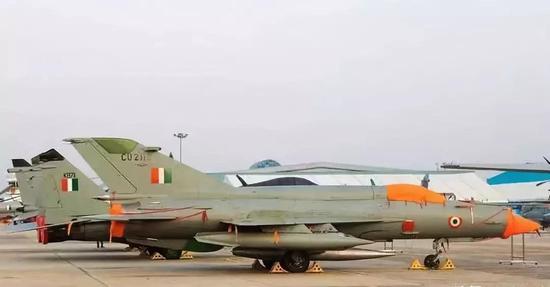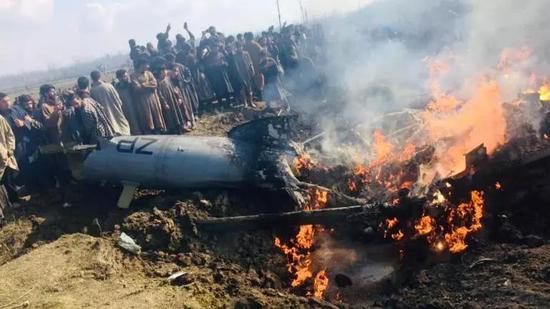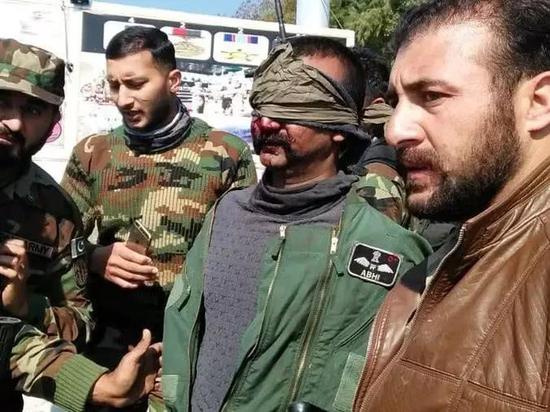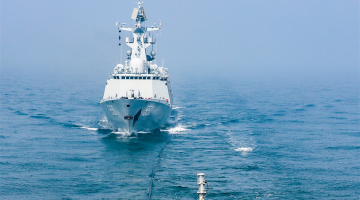Not long ago, an air battle broke out between India and Pakistan. In a video release by Pakistan, the captured Indian pilot Wing Commander Abhinandan, who has been released by Pakistan, narrated his experience in the air battle. He noted that he was in search of the target when his MiG-21 Bison fighter jet was shot down. In the process, he neither shot down nor spotted any F-16 fighters of the Pakistani Air Force.
What happened indeed? In which direction will this new India-Pakistan conflict go?

The picture shows a MiG-21 Bison fighter jet of the Indian Air Force.
Question (Q): As India’s MiG-21 pilot Wing Commander Abhinandan recalled, he didn’t see anything worthy of special attention in the air, and had no idea how his fighter jet was detected and locked by the Pakistani side before it was shot down by a medium-range missile. Some analysts believe that his MiG-21 was shot down by an F-16. Professor Jin, how do you think about this?
Professor Jin Yinan with the National Defense University (NDU) of the Chinese PLA(Jin): The Indian side tried to find reasons for its loss, saying that Pakistan had dispatched its most advanced F-16 fighters, which was denied. Pakistan’s saying is more reliable for three reasons.
First, the sales of F-16 fighters had been cut off by the US, so Pakistan now has only less than 20 such aircraft left, not to mention how many of which could still perform a flight mission.
Second, Pakistan had signed an “agreement” with the U.S., which banned the use of F-16 fighters in offensive operations. This time, Indian warplanes flew into the Pakistani airspace and attacked ground targets first, and then Pakistan sent aircraft into India’s airspace for retaliation. From this perspective, it was a retaliatory, offensive operation conducted by Pakistan, in which the F-16 was inapplicable according to the aforesaid agreement.
Third, the Indian military had already obtained basic data about the F-16 jets. The U.S. planned to export the F-21—an upgraded version of the F-16—to India, so it had informed the Indian side of all performance parameters about the aircraft. For this reason, India is familiar with the combating performances of the F-16, including its fire-control and searching radar frequency.
Given all this, Pakistan was unlikely to use its F-16 fighters in the air battle because there was a small chance to win even if it sent out the aircraft.

Only a few F-16 fighters in Pakistan can remain capable for flight missions.
Q: Some conjectured that India’s MiG-21 was shot down by a surface-to-air missile. Do you think it’s possible?
Jin: All existing signs indicate that it is improbably a surface-to-air missile. The wreckage of the MiG-21 fighter jet should be comminuted debris caused by cellular explosion. However, it is evident that part of the crashed MiG-21 fighter jet was cut by a missile, instead of exploding in the air. It was directly hit by a missile warhead. In this case, it is unlikely to be a surface-to-air missile, but probably an air-to-air missile.

The picture shows the crash site of India’s MiG-21 Bison fighter jet.
Q: Professor Jin, we all know that India’s military strength is stronger than that of Pakistan. Based on the result of this air conflict, what shortcomings does the Indian Air Force have?
Jin: The aircraft equipped in India’s frontier troops are poor in performance. For instance, the MiG-21 fighter is already outdated. The captured Indian pilot is a senior wing commander. Among air force pilots, wing commander is already a high military ranking, who needs to fly at least 1,000 hours, so he is actually an experienced pilot. However, limited by its backward avionics, the MiG-21 fighter’s search radar could not detect the enemy and its fire-control radar cannot guide medium-range air-to-air missiles. So, it could not perform preemptive detection and firing. As a result, it was detected and shot down first by the enemy. If the Indian military commissioned some more advanced fighters in the frontier, it would not only enhance its image ,but also not lose so badly. This is a feature of air warfare: a single pilot and a single aircraft can determine the result of an air battle.

The captured Indian pilot Abhinandan is a senior pilot with at least 1,000 hours of flight time.
Q: Pakistan released the captured Indian pilot without much delay, and just drove out India’s subsequent provocations from the sea and the land, instead of taking offensive operations. Moreover, it dispatched troops to sustain armed militants and crack down on terror outfit Jaish-e-Mohammed (JeM). How did India respond to such goodwill behaviors of Pakistan?
Jin: From this angle of view, Pakistan takes a very reasonable stance and is doing the right thing to save this small conflict from evolving into a war between two nuclear powers. Pakistan has shown enough goodwill to India by releasing the captured Indian pilot quickly. As a matter of fact, neither India nor Pakistan wants a war.
In general, the Indian government also shows a calm, rational attitude. It doesn’t continue flinging out hard words or threatening to launch a war. This is a good trend.
Undoubtedly, the international community hopes that India and Pakistan stay calm and maintain peace, instead of falling into fierce conflicts. This is a common stand shared by all major countries, especially China and India.

The captured Indian pilot Abhinandan (center) was at the handover ceremony.
Q: The territorial dispute over the Kashmir region between India and Pakistan has been a persistent problem. In surface, the air battle was caused by terrorism, but in nature it remains a territorial problem. How should the two countries innovatively solve the Kashmir dilemma that has long plagued the development of their relations?
Jin: Kashmir has long been a disputed region between India and Pakistan. Today, it is split into Indian- and Pakistani-controlled parts of Kashmir, but both sides aren’t satisfied with the current Line of Actual Control (LAC). The persistent dispute can be solved only through peaceful negotiations, rather than wars. Both countries are clearly aware of this point. This air battle is merely a limited tentative operation, through which India realized that it should not look down on Pakistan’s Air Force. It would also urge the hawks of India to be more reasonable and gain a clearer insight into the current situation.
There is a very small chance for Pakistan to launch a war against India because it still lags far behind India in terms of overall national strength and military power. From this perspective, the result of this air battle would make the Indian side more rational and calm, which is conducive to maintaining relative peace in the disputed Kashmir region.
Disclaimer: The original article is published on http://mil.cnr.cn/ and it is translated from Chinese into English by the China Military Online. The information, ideas or opinions appearing in this article are those of the author and do not reflect the views of eng.chinamil.com.cn. Chinamil.com.cn does not assume any responsibility or liability for the same.









